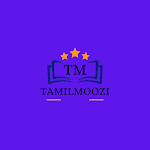Tamil Nadu showed the lead in resistingcolonial rule. As early as the late eighteenthcentury the Palayakarars, resisted theEnglish attempts to establish their politicalhegemony in Tamil Nadu. Even after thedefeat of the Palayakarars, an uprising wasorganised by Indian sepoys and officers inVellore Fort in 1806 that had its echoes inseveral cantonments in south India. Thanksto the introduction of Western educationand eventual emergence of educated Indian
ideologies in Tamil Nadu.
together started a newspaper The Hindu in1878. It soon became the vehicle of nationalistpropaganda. G. Subramaniam also started aTamil nationalist periodical Swadesamitranin 1891 which became a daily in 1899. Thefounding of The Hindu and Swadesamitranprovided encouragement to the starting of othernative newspapers such as Indian Patriot, SouthIndian Mail, Madras Standard, Desabhimani,Vijaya, Suryodayam and India.
from Madras.The partition of Bengal (1905) led tothe Swadeshi Movement and changed thecourse of the struggle for freedom. In variousparts of India, especially Bengal, Punjab andMaharashtra popular leaders emerged. Theyimplemented the programme of the CalcuttaCongress which called upon the nation topromote Swadeshi enterprise, boycott foreigngoods and promote national education.
moderates hoped for some constitutionalreforms. However, they were disappointed withthe Minto-Morley reforms as it did not providefor responsible government.
Thus when the national movement was inits ebb, Annie Besant, an Irish lady and leader ofthe Theosophical Society, proposed the HomeRule Movement on the model of Irish HomeRule League. She started Home Rule Leaguein 1916 and carried forward the demand forhome rule all over India. G.S. Arundale, B.P.Wadia and C.P. Ramaswamy assisted her inthis campaign. They demanded home rule withonly a nominal allegiance to British Crown.She started the newspapers New India and
Commonweal to carry forward her agenda. Sheremarked, “Better bullock carts and freedomthan a train deluxe with subjection”. Under thePress Act of 1910 Annie Besant was asked to payhefty amount as security. She wrote two books,How India wrought for Freedom and India: ANation and a pamphlet on self-government.
முதல் திருப்புதல் தேர்வு 2024 திருவள்ளுவர் மாவட்டம் வினாதாள்
EM
முதல் திருப்புதல் தேர்வு 2024 திருவள்ளுவர் மாவட்டம் வினாதாள்
TM
முதல் திருப்புதல் தேர்வு 2024 சென்னை மாவட்டம் வினாதாள்
TM
The Indian national movement wasrevived and also radicalised during theHome Rule Movement (1916-1918), led byLokamanya Tilak and Annie Besant. WorldWar I and Indian’s participation in it was thebackground for the Home Rule League. WhenBritain declared war against Germany in 1914,the moderate and liberal leadership extendedtheir support to the British cause. It was hopedthat, in return, the British government wouldgive self-government after the war. Indiantroops were sent to several theatres of WorldWar. But the British administration remainednon-committal to such goals. What was seen
as a British betrayal to the Indian cause ofself-government led to a fresh call for a massmovement to pressurise the British government.regiment and twoSubedars and the Jamedar Sheik Kasim of the1st battalion of the 1st regiment. Vellore Revolthad all the forebodings of the Great Rebellion of1857. The only difference was that there was nocivil rebellion following the mutiny. The 1806revolt was not confined to Vellore Fort. It had its echoes in Bellary, Walajabad, Hyderabad,Bengaluru, Nandydurg, and Sankaridurg.
*பத்தாம் வகுப்பு சமூக அறிவியல் முதல் திருப்புதல் தேர்வு 2024 கடலூர் மாவட்ட வினாதாள் - DOWNLOAD
*பத்தாம் வகுப்பு சமூக அறிவியல் Book back one mark questions PDF- DOWNLOAD
*பத்தாம் வகுப்பு சமூக அறிவியல் முக்கிய 5 மதிப்பெண் வினாக்கள் - DOWNLOAD
*10 TH CLASS| SOCIAL| MLM GUIDE | EM|VILLUPURAM|pdf- DOWNLOAD
*10 TH CLASS| SOCIAL| MLM GUIDE | EM|VILLUPURAM|pdf - DOWNLOAD
*பத்தாம் வகுப்பு|சமூகஅறிவியல் | அரசு பொதுத்தேர்வுவில் |எதிர்பார்க்கப்படும் வினாக்கள்|10th class|social|pdf- DOWNLOAD








0 கருத்துகள்